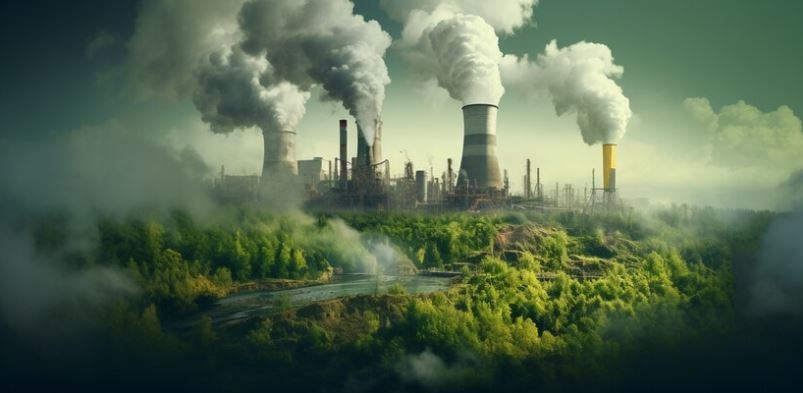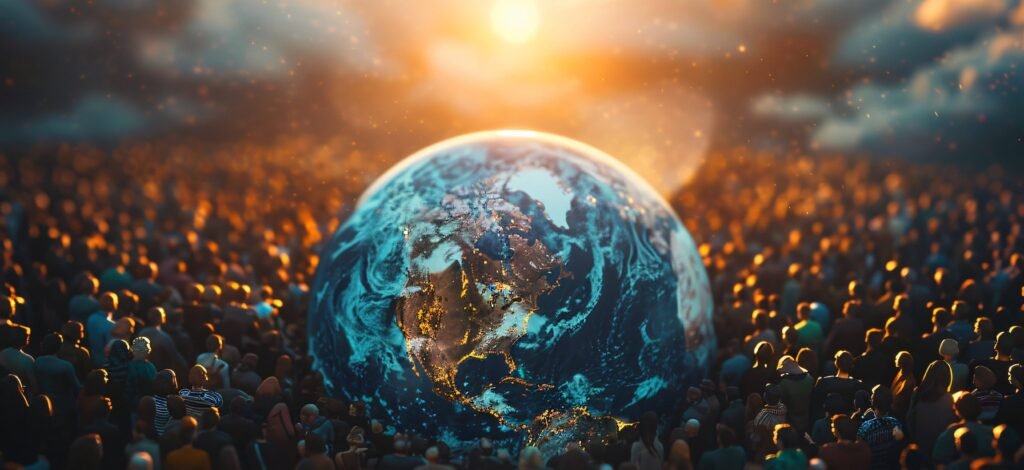Climate change is an actual reality that is changing our planet, not some far-off threat. The evidence is overwhelming: our planet is changing quickly and possibly irrevocably, as seen by the extraordinary wildfires in Australia and the melting ice caps in the Arctic. This blog examines climate change’s causes, effects, and possible solutions while highlighting how urgent it is for everyone to take action.
The Science Behind Climate Change
The Impact of the Greenhouse
The greenhouse effect is a natural phenomenon that controls Earth’s climate. After reaching the Earth’s surface, solar energy is absorbed there and reradiated as heat back into the atmosphere. Some of this heat is trapped by greenhouse gases (GHGs), which include nitrous oxide (N2O), carbon dioxide (CO2), and methane (CH4). This keeps the earth warm enough to support life.
But since the Industrial Revolution in particular, human activity has greatly raised the amounts of these GHGs in the atmosphere. Elevated CO2 levels are a result of burning fossil fuels, deforestation, and industrial operations; methane and nitrous oxide levels are a result of agricultural practices and waste management. The increased greenhouse effect is the primary cause of climate change and global warming.
Proof of Global Warming
The overwhelming and varied evidence points to climate change. Important metrics consist of:

Climate Change Effects
Effects on the Environment
1. Biodiversity Loss:- Ecosystems and species that are unable to adjust to sudden changes in temperature and weather patterns are at risk due to climate change. For example, rising ocean temperatures are causing extensive bleaching of coral reefs.
2. Ocean Acidification:- As CO2 levels rise, oceanic carbonic acid concentrations rise as well, endangering marine life, especially species that have calcium carbonate skeletons or shells.
3. Melting Ice and Snow:- Sea level rise is a result of the melting of polar ice caps and glaciers, endangering coastal communities and habitats.
Effects on Society and Economy
1. Agricultural Disruption:- Crop yields are impacted by variations in temperature and precipitation patterns, endangering the availability of food. It can become unsuitable for some areas to grow traditional crops, requiring changes to agricultural practices.
2. Water Scarcity:- The availability of freshwater is impacted by altered precipitation patterns and the melting of snowpack, causing shortages in many regions of the world.
3. Health Risks:- Raising the temperature can make health issues worse, especially for those who are already vulnerable. For example, heatwaves present significant health concerns, and shifting weather patterns can affect the spread of illness.
4. Economic Costs:- A number of industries, including tourism, agriculture, and fisheries, are severely impacted by the economic effects of climate change. Significant expenses are also incurred by extreme weather events in terms of disaster response and recovery.
Human Displacement
Millions of people have been displaced by climate change as a result of harsh weather, increasing sea levels, and a shortage of resources. Among the many difficulties these climate migrants confront are diminished social cohesion, loss of means of subsistence, and heightened susceptibility to exploitation.

Dealing with Climate Change
Strategies for Mitigation
Mitigation entails cutting back on or stopping greenhouse gas emissions in order to slow global warming. Important tactics consist of:
1. Transition to Renewable Energy:- CO2 emissions can be decreased by switching from fossil fuels to renewable energy sources including hydropower, wind, and solar power.
2. Energy Efficiency:- GHG emissions can be greatly reduced by increasing the energy efficiency of industry, transportation, and buildings.
3. Carbon Sequestration:- You can take CO2 out of the atmosphere by improving naturally occurring carbon sinks like forests and soils and by creating technology solutions like carbon capture and storage.
4. Sustainable Agriculture:- Techniques including enhanced crop management, less tillage, and agroforestry can minimize emissions from agriculture.
5. Policy and Regulation:- Governments are essential in establishing laws and policies that control emissions, encourage the use of renewable energy, and advance sustainable lifestyles.
Strategies of Adaptation
To reduce harm, adaptation entails making adjustments to the effects of climate change. Important tactics consist of:
1.Infrastructure Resilience:- Constructing flood barriers and robust structures, among other forms of infrastructure that can resist severe weather occurrences.
2. Water Management:- To alleviate shortages and guarantee a steady supply, effective water management techniques must be put into place.
3. Agricultural Adaptation :- creating crop types that can withstand harsh weather conditions and implementing environmentally friendly agricultural methods.
4. Disaster Preparedness:- Improving disaster response mechanisms to shield communities from risks brought on by climate change.
5. Community Engagement :- Including nearby communities in the development of adaptations to guarantee that tactics are successful and appropriate for the given environment.

The Part That People and Communities Play
In addition to systemic reforms, community and individual efforts are crucial in the fight against climate change. Here are a few ways that individuals can help:
1. Reducing Energy Consumption:- Small steps like utilizing water- and energy-efficient appliances, cutting back on travel by automobile, and so forth can add up to a big impact.
2. Supporting Renewable Energy:- People have two options: they can purchase solar panels for themselves or through their energy providers.
3. Sustainable Living:- Reducing meat consumption, recycling, and composting are examples of sustainable living that can assist reduce one’s carbon footprint.
4. Advocacy and Education: – Pushing for stricter laws and increasing public knowledge of climate change can lead to more significant changes in society.
5. Community Initiatives :- Taking part in or starting neighborhood sustainability initiatives, such clean-up campaigns or community gardens, can promote an attitude of environmental responsibility.
Final Thoughts
Due to the complexity and diversity of the issue, all societal levels must take swift action to combat climate change. We may endeavor towards a future that is more robust and sustainable by comprehending the science, realizing the effects, and putting both adaptation and mitigation plans into action. The health of our planet and the welfare of future generations depend on our combined efforts, so the moment to act is now.












1 thought on “The Emerging Epistemic: Comprehending and Handling Climate Change”